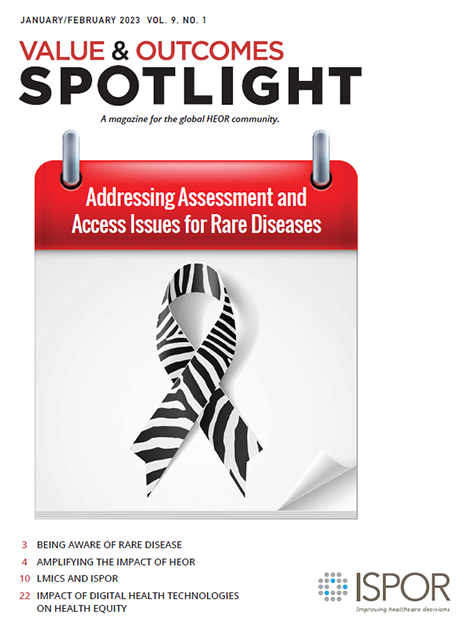Research Roundup
Section Editor: Aakash Bipin Gandhi, BPharm, PhD, Methodologist Expert, RWD, Sanofi, Cambridge, MA, USA
The economic burden of rare diseases: quantifying the sizeable collective burden and offering solutions.
Garrison S, Kennedy A, Manetto N, Pariser AR, Rutter JL, Yang G. Health Affairs Forefront. February 1, 2022. doi: 10.1377/forefront.20220128.987667
Summary
The article by Garrison et al summarizes findings from 4 studies across different stakeholders, healthcare systems, and government bodies that highlight the cost burden associated with rare disease conditions. The authors discuss challenges associated with rare disease evaluations and opportunities for future research. The authors also provide recommendations with the aim of addressing gaps and challenges associated with rare disease research.
Relevance
The 4 studies had consensus related to their conclusions regarding economic research of rare diseases. First, the studies acknowledged that rare diseases are responsible for a significant burden on the healthcare systems. At times, this burden is even more significant than that imposed by more prevalent disease conditions. Second, a lack of data that are standardized for rare disease research prevents investigators from identifying and quantifying patients with rare diseases. Third, future analysis requires novel data and approaches to accurately quantify the true burden of rare disease. The authors also summarized the top factors that drive the cost burden of rare disease. These include delayed diagnosis and imperfect quantification of the disease (lack of diagnostic codes), direct medical costs (eg, inpatient admissions), indirect and nonmedical costs (eg, lost earnings due to reduced productivity), and cost of rare disease therapies. Finally, the authors propose certain recommendations to help improve rare disease research. These include creating diagnostic codes for rare disease, enriching the data collection process for rare diseases (eg, through improved electronic health record capture, supporting registries, and natural studies), and improving patient access to advanced diagnostic tools.
How to value orphan drugs? a review of European value assessment frameworks.
Blonda A, Denier Y, Huys I, Simoens S. Front Pharmacol. 2021;12:631527. doi: 10.3389/fphar.2021.631527.
Summary
This narrative review by Blonda et al provides information on the strengths and limitations of value assessment frameworks for orphan drugs in Europe that can serve as guide for healthcare decision makers.
Relevance
Standard economic evaluations within value assessment frameworks consider both orphan and non-orphan drugs equally. Hence, the cost-effectiveness estimates of these evaluations do not consider the effect of disease rarity on data uncertainty parameters. This in turn can affect the evaluation of an orphan drug’s health benefit as measured in quality-adjusted life-years (QALYs). Hence, value assessment frameworks that allow for the inclusion of weighted QALYs or those that allow for the inclusion of flexible incremental cost-effectiveness thresholds are desirable to overcome disease rarity-related limitations. Multicriteria decision analysis is an approach that allows investigators to include a set of flexible parameters that are inclusive of multiple stakeholder perspectives. In conclusion, all decision makers should aim to seek the maximum level of transparency in terms of model assumptions before making regulatory approvals.
The economics of moonshots: value in rare disease drug development.
Yates N, Hinkel J. Clin Transl Sci. 2022;15(4):809-812.
Summary
This article by Yates and Hinkel discusses the economics and associated value involved in orphan drug development. The authors discuss orphan drug development from a historical purview and examine present orphan drug trends, insurance and reimbursement hurdles, value frameworks, and patient-economist perspectives.
Discussion
Value assessment of orphan drugs presents several challenges. These include but are not limited to clinical trials with small patient sizes, lack of clarity on clinical endpoints, lack of existing standard of care for treatment comparison, and nonvalidated quality of life measurement instruments. The authors argue that development of orphan drugs that either cure or positively alter chronic disease conditions should be prioritized, irrespective of the population size affected by the condition. Further, the authors stress the need to place patients at the center of drug development, approval, and treatment decisions. The authors conclude by highlighting that innovative market access strategies would need to be carved out to ensure that patient demand for orphan drugs is met globally despite its increased burden on payers and the healthcare system.
Note from the Section Editor: Views, thoughts, and opinions expressed in this section are my own and not those of any organization, committee, group, or individual that I am affiliated with.

